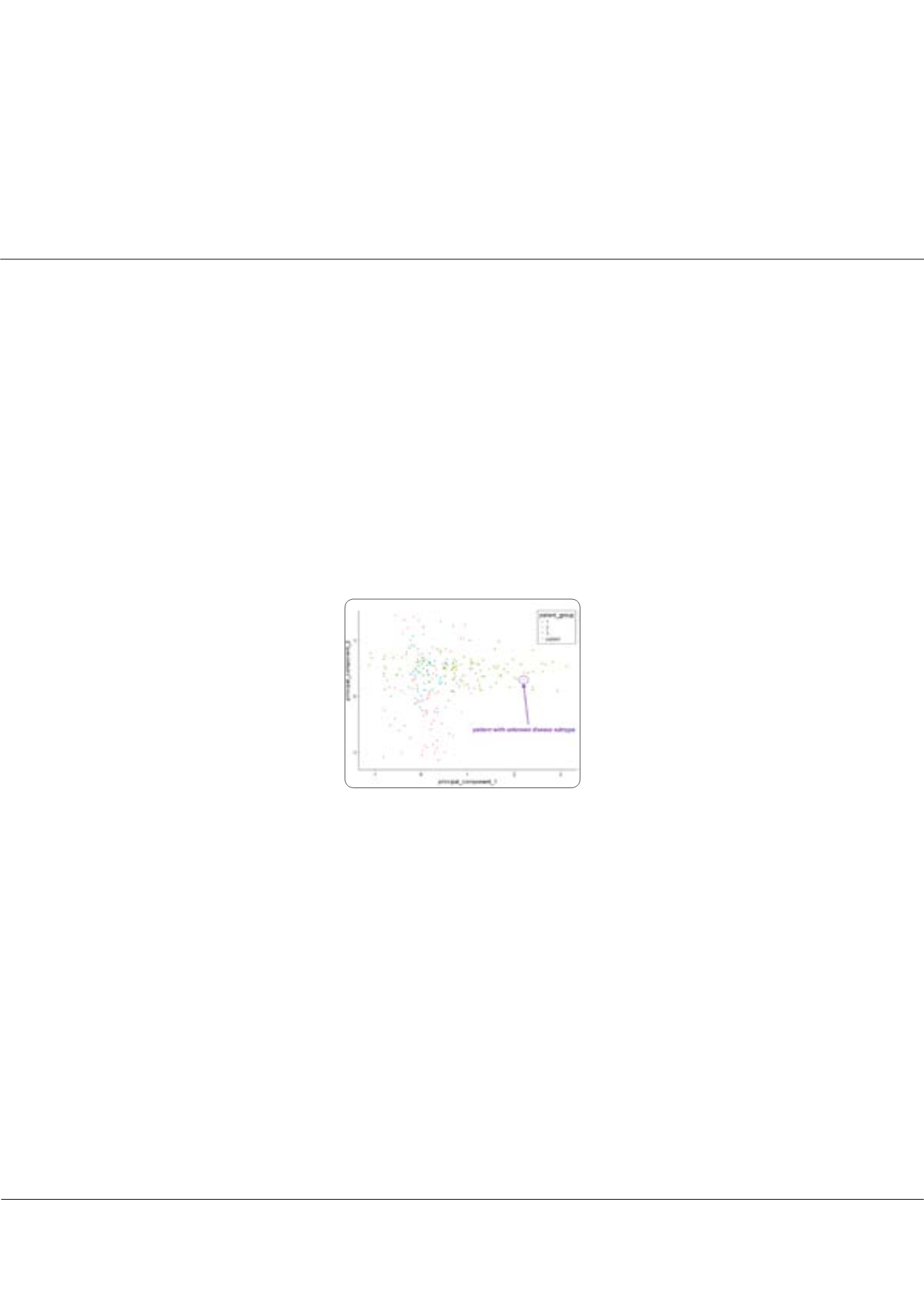

Page 45
conferenceseries
.com
Volume 3
Diagnostic Pathology: Open Access
ISSN: 2476-2024
Laboratory Medicine 2018
June 25-26, 2018
June 25-26, 2018 | Berlin, Germany
13
th
International Conference on
Laboratory Medicine & Pathology
Welcome to a labolution-The application of datamining and systems biology forpersonalizedmedicine
Christoph Hiemenz
PEPperPRINT GmbH, Germany.
H
igh-throughput technologies ranging from high-content microscopy screening to automated mass spectrometry pipelines
and peptide microarray assays enable the generation of big medical data sets in a brief period of time with the requirement
of very small analyte volumes. As a result, extremely large multiomics data sets can be generated which are ideally suited
for statistical learning procedures using well established classifiers such as random forests or multivariate logistic regression
models. To extract meaningful information from the data, a major challenge comprises the dimensionality reduction and
unsupervised pattern recognition via machine learning algorithms including Fisher discriminant analysis, shrunken centroid
analysis or clustering. Another problem to be tackled is represented by multivariate feature collinearities and ways have to be
identified to remove this ambiguity. Yet, the reward for this mathematical rigor is the generation of reliable classifiers which
can quickly stratify individual patients into disease/treatment subpopulations with acceptable sensitivity and specificity from
multiomics data sets. Above all, technology suppliers such as opentrons and Oxford Nanopore Technologies promise the
automated generation of multiomics data sets for a reasonable price.
Biography
Christoph Hiemenz has completed his MSc from Ruprecht-Karls University Heidelberg. He work as a bioinformatician at PEPperPRINT GmbH and is the scientific
instructor of the iGEM Team Heidelberg 2019. He has worked on diverse research projects:
-DKFZ Heidelberg, Prof. Jörg Hoheisel- Kinase activity profiling with peptide arrays
-BioQuant Heidelberg, Prof. Roland Eils/Prof. Barbara Di Ventura- Optogenetic nuclear protein shutteling and ODE modeling
-KTH Stockholm, Prof. Stefan Ståhl – Surface functionalization of E.coli cells via sortases and inteins
- EMBL Heidelberg, Dr. Carsten Schultz- Bioactivity of trifunctional Sphingolipids
-IPMB Heidelberg, Prof. Andres Jäschke- Multivalent fluorescent turn-on probes for RNA imaging.
Christoph.hiemenz@pepperprint.comChristoph Hiemenz, Diagn Pathol Open 2018, Volume 3
DOI: 10.4172/2476-2024-C1-002
Figure 1:
Example data: principal component analysis of simulated peptide microarray data of corresponding to serum responses from different patient collectives.
The groups correspond to the microarray serum signals detected for patients with different known pathogenic subtypes of the disease. The principal component
dimensionality reduced data is used for the training of classifiers such as random forests or multiple logistic regression models. The PCA data for a patient serum
with unknown disease subtype is shown
















